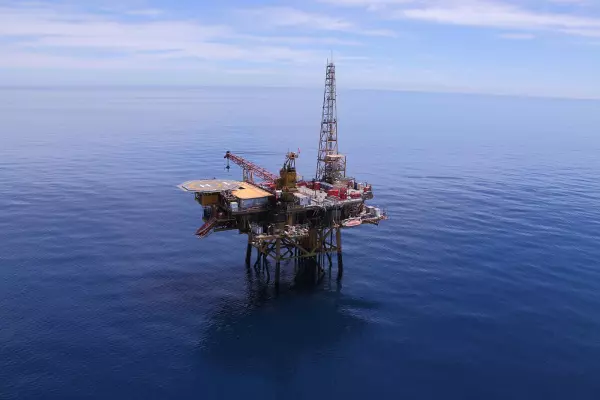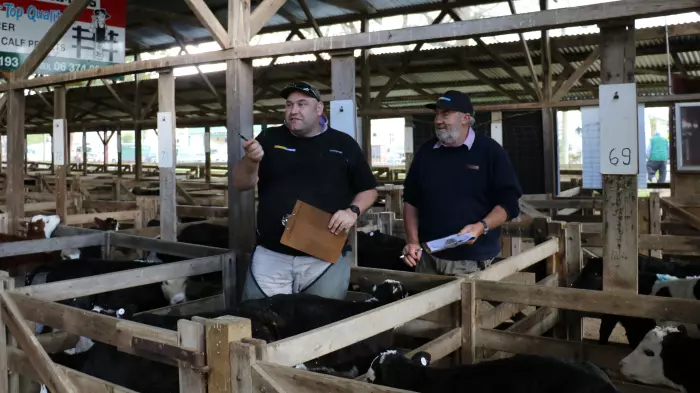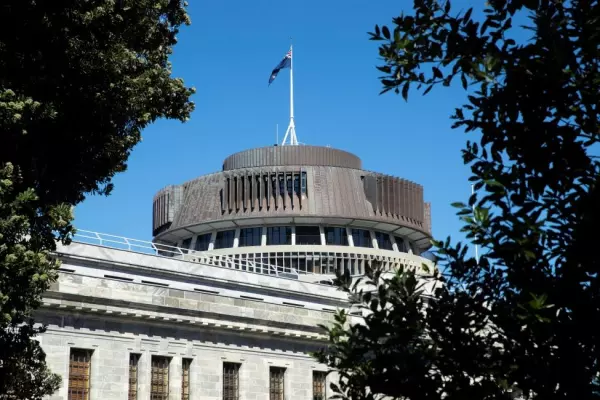When Maria Eves was being interviewed for a job as a photographer with the New Zealand Defence Force (NZDF) in 2009, she asked the interview panel whether she would ever have to go to war.
The answer - “it’s very unlikely” - put her mind at rest, though she knows what to do should she ever find herself on the battlefield.
She’s a sergeant in the air force, and when she photographed an NZDF evacuation flight from Kabul airport in August last year she was armed not just with two cameras but also a rifle.
Eves, who is now head photographer for the NZDF, didn’t know the military even employed photographers until she saw the job advertised. She had graduated from Unitech with a diploma in photography in 2007 and spent the next two years working as a technician in a photo lab and a photo editor for a portrait studio.
“I thought the NZDF job sounded amazing, so I applied for it and I got through.”
In the years since then, she’s helped document thousands of defence force activities, from army training exercises to navy divers at work. These days, as well as taking photos herself, she heads a team of eight other photographers who are based in NZDF bases around the country.
Most, like her, were already trained photographers before they joined the force, but a few took a different route, joining the photography team after being employed elsewhere within the NZDF.
Eves is based at Whenuapai air force base. Because military photography has historically been associated with taking aerial photos for intelligence purposes, all defence force photographers are members of the air force. But Eves and her team of photographers record the activities of all branches of the force, both at home and overseas.
While she didn’t know much about the military when she first started the job, she did know that the NZDF does a lot of humanitarian and aid work.
 The RNZAF's evacuation of civilians from Kabul was orderly compared with previous days (Image: Maria Eves, NZDF)
The RNZAF's evacuation of civilians from Kabul was orderly compared with previous days (Image: Maria Eves, NZDF)“That was a big part of why I joined,” she says. “It’s really heart-warming to see that even though we are a small country, we can still provide so much support to others in need.
“The NZ public isn’t always aware of the awesome stuff the NZDF does, and I love that it is my job to show everyone how we are helping out.”Eves still hasn’t had to go to war, but she can now say she has entered a war zone – albeit for a very short period of time. In August last year, she was assigned at the last minute to photograph an NZDF evacuation flight for NZ citizens and visa holders at Kabul airport soon after Afghanistan fell to the Taliban.
She admits that she was very apprehensive as she set off on a commercial flight from NZ to Dubai. “I actually felt a little bit afraid for my life. I really wondered what I was getting myself into and whether I might even die.”
However, she was reassured after talking to a photographer from the Australian defence force who’d already been on a few flights into Kabul. By the time she boarded a C-130 Hercules to fly from the UAE to Afghanistan, she was feeling more relaxed.
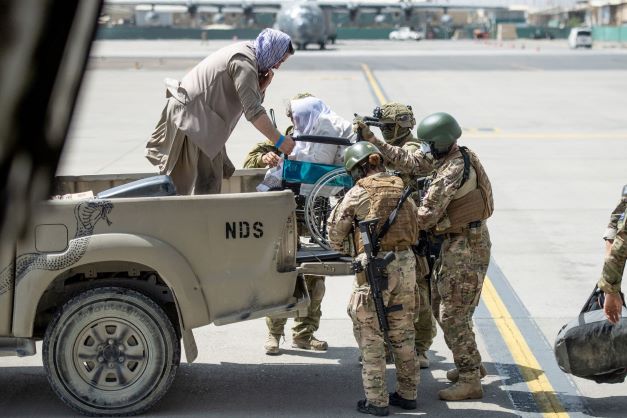 A woman in a wheelchair is readied for her RNZAF flight out of Afghanistan (Image: Maria Eves, NZDF)
A woman in a wheelchair is readied for her RNZAF flight out of Afghanistan (Image: Maria Eves, NZDF)The scenes she encountered were very different from those she’d seen in the media, with people swarming Kabul airport and grabbing desperately onto planes. By the time the NZ evacuees, who included former interpreters and other at-risk Afghanis who had worked with the NZDF during the previous 20 years, made it to the tarmac next to the Hercules they were ready to get aboard quickly and efficiently.
“It was way different than I expected,” says Eves. “From what I’d seen in the media it looked insane. But when we got there you couldn’t hear any gunshots. It was just a lot of people in an orderly line.”
It was also incredibly hot – about 42 degrees – and Eves was wearing full body armour as well as carrying her rifle and cameras.
But despite those impediments and the fact that she spent only a very short time on the ground, she managed to take some great action shots of the evacuees both before and after they boarded the plane. Some of them featured in NZ news media, and others appeared in NZDF force social media channels and magazines.
One of her favourite photos is of a boy of about five sitting with his father on the flight from Kabul back to the UAE, which was one of a series of evacuation photos that appeared on the NZDF Facebook page.
 "The biggest smile you've ever seen" (Image: Maria Eves, NZDF)
"The biggest smile you've ever seen" (Image: Maria Eves, NZDF)The little boy had been sitting in front of Eves during the flight. “He had the biggest grin you have ever seen,“ she wrote in the Facebook post. “Even though the photo had to be blurred to protect his identity, you can still see his huge smile. I focused in on him with my camera, using a shallow depth of field to blur out any distractions around him, and captured his radiating smile.”
A few months after Eves returned from Afghanistan she was getting ready for another overseas trip, this time onboard the HMNZS Aotearoa, a $500m purpose-built supply ship which was about to make its first voyage to Antarctica to deliver supplies to McMurdo Sound and Scott Base.
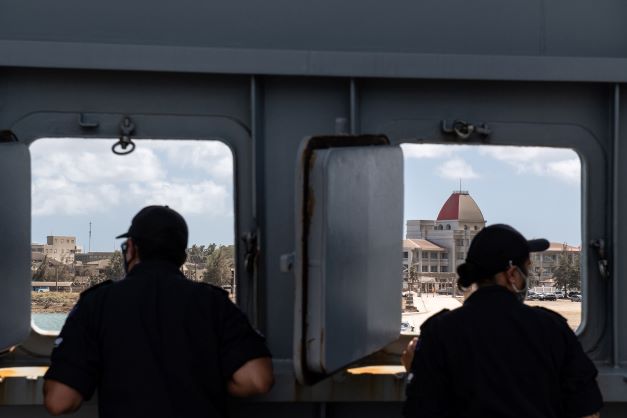 Due to covid restrictions, the crew of HMNZS Aotearoa stayed aboard while delivering relief to Tonga after the volcanic eruption and tsunami (Image: Maria Eves, NZDF)
Due to covid restrictions, the crew of HMNZS Aotearoa stayed aboard while delivering relief to Tonga after the volcanic eruption and tsunami (Image: Maria Eves, NZDF)But nature had other ideas. After the eruption and tsunami in Tonga on January 15, Eves and the crew of Aotearoa found themselves unexpectedly headed to Nuku’alofa to deliver essential supplies such as milk powder, tarpaulins and water pumps.The ship was also carrying 250,000 litres of water and has a desalination plant that can make another 70,000 litres of water a day. During the time the ship was berthed in Nuku’alofa this water was pumped into water tankers waiting on the jetty.
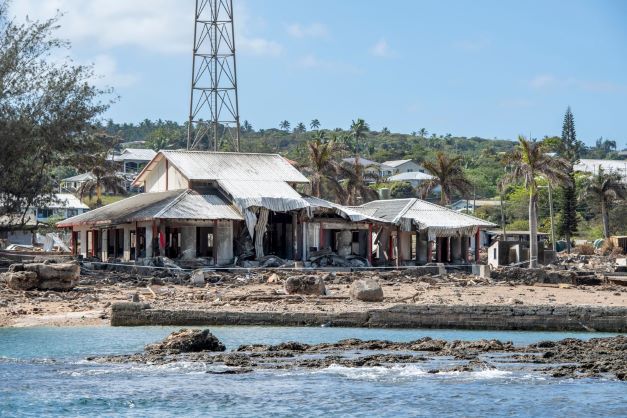 A ship's eye view of tsunami damage on Tongatapu (Image: Maria Eves,NZDF)
A ship's eye view of tsunami damage on Tongatapu (Image: Maria Eves,NZDF)Covid meant all the delivery work had to be contactless, so Eves never left the ship while they were in Nuku’alofa. However, she took a lot of photos of the onboard activities and was able to get some shots of the ash-covered roofs in the city.
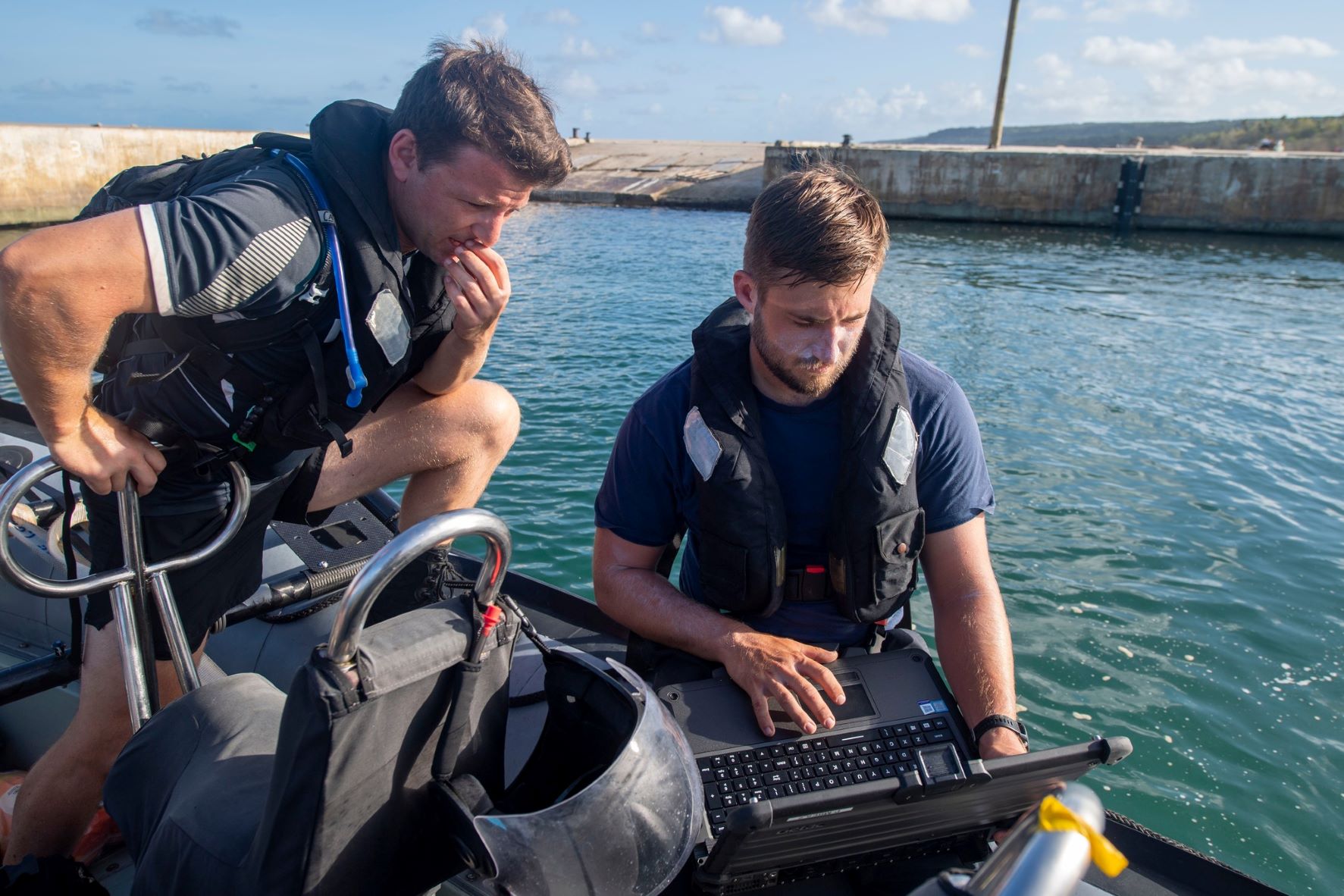 Apart from delivering water and cargo, the crew of HMNZS Aotearoa surveyed Nuku'alofa harbour after the eruption and tsunami (Image: Maria Eves, NZDF)
Apart from delivering water and cargo, the crew of HMNZS Aotearoa surveyed Nuku'alofa harbour after the eruption and tsunami (Image: Maria Eves, NZDF)After they returned to NZ from Tonga, covid-19 protocols meant everyone on the Aotearoa had to stay on the ship until it finally left for Antarctica. Arriving there a few days later, Eves was as captivated by the place as all visitors to Antarctica seem to be.
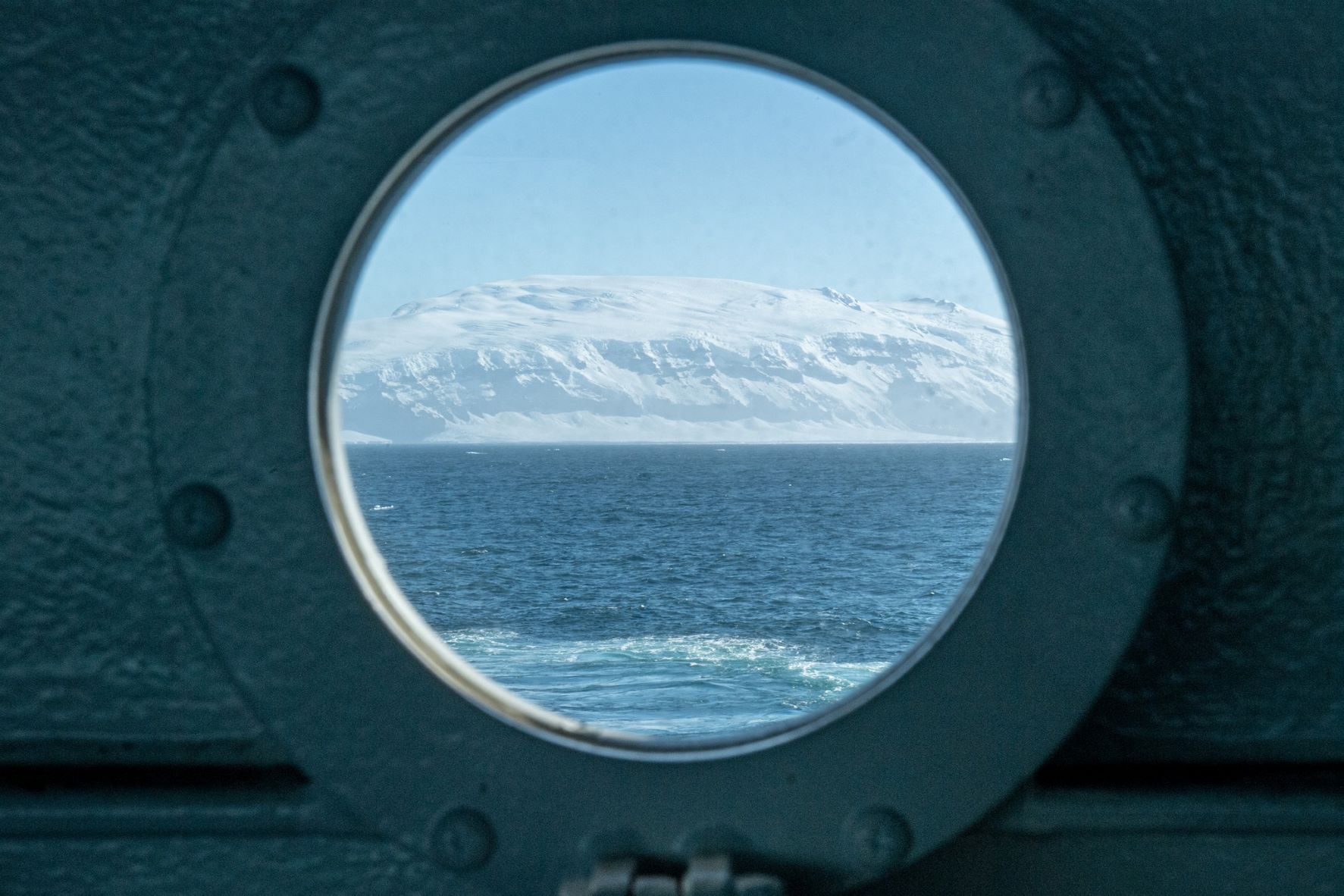 The view from HMNZS Aotearoa on its first trip to Antarctica (Image: Maria Eves, NZDF)
The view from HMNZS Aotearoa on its first trip to Antarctica (Image: Maria Eves, NZDF)“I had expected to be blown away but there are all these things you don’t think about, like how thick the ice shelf is, the fact that planes land on the ice, and the sheer size of the icebergs.”
As an added bonus she saw – and was able to photograph – some penguins that came close to the ship.
These days the NZDF also employs videographers and sometimes Eves feels a bit jealous watching them working because they don’t have to capture an entire story in just one shot; they have several minutes of video to work with.
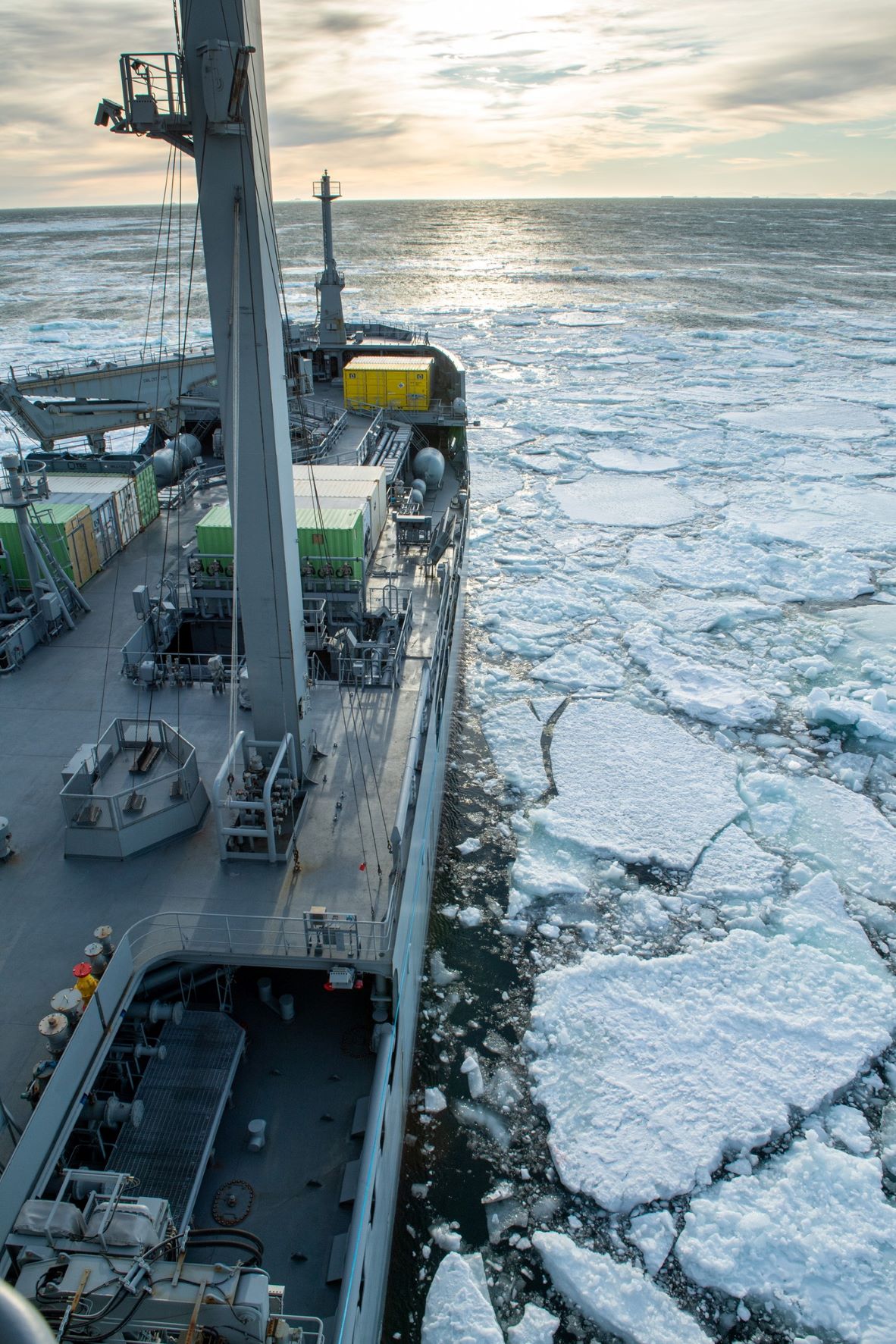 HMNZS Aotearoa breaks the Antarctic ice (Image: Maria Eves, NZDF)
HMNZS Aotearoa breaks the Antarctic ice (Image: Maria Eves, NZDF)On the other hand, photos can be processed and posted on social media much faster than videos. And Eves knows how powerful one really great photo can be – particularly one taken by a trained photographer rather than snapped on a mobile phone. Like all professional photographers, she’s always aiming to take that photo.
“You can tell a story in just one photo, and often it’s something everyone remembers.”
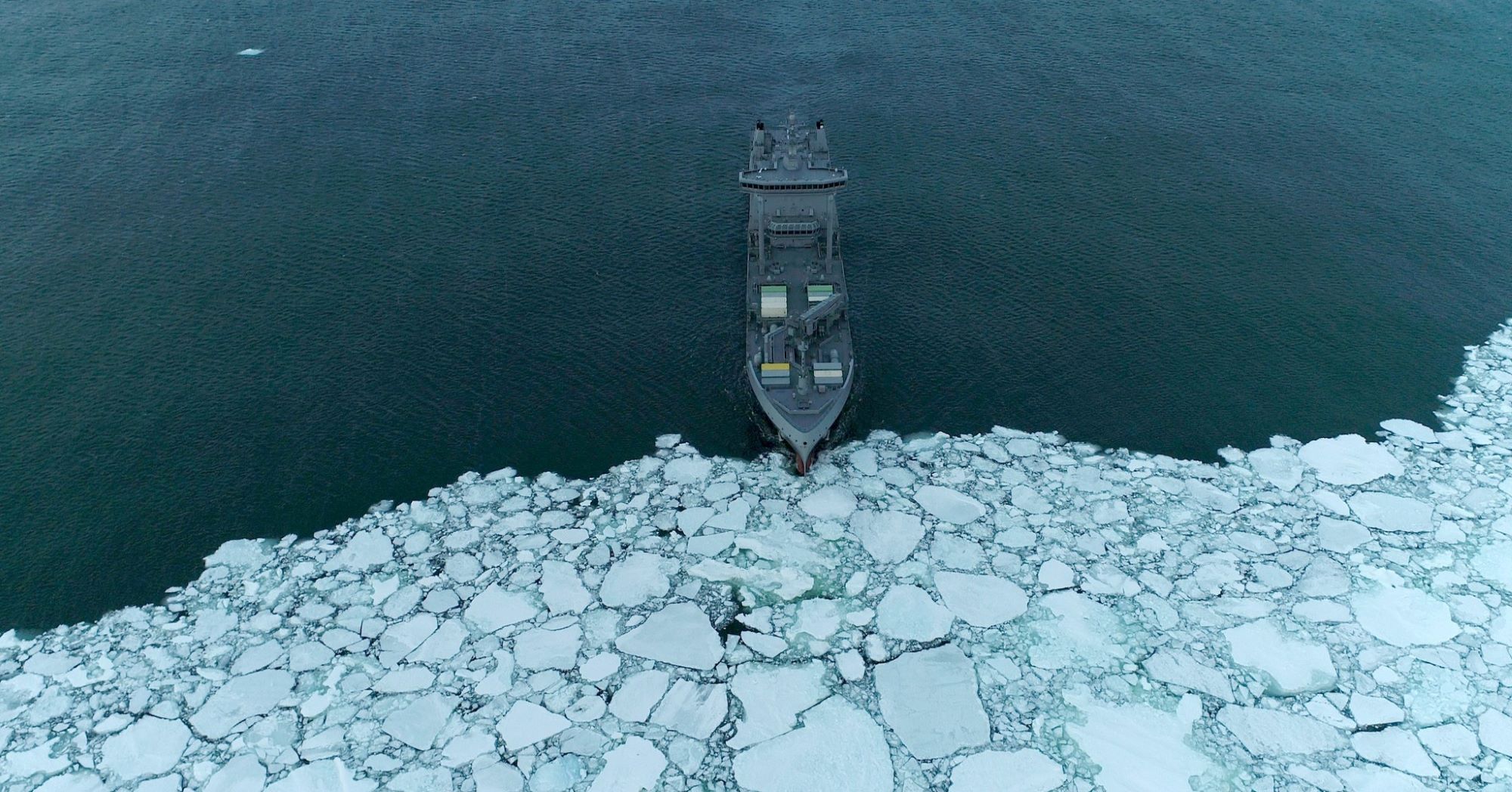 HMNZS Aotearoa on the edge in Antarctica (Image: Maria Eves, NZDF)
HMNZS Aotearoa on the edge in Antarctica (Image: Maria Eves, NZDF)







